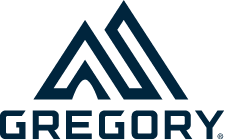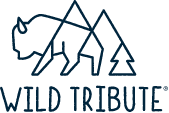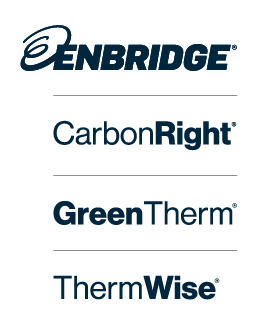There are plenty of reasons to rent your skis and snowboard-- whether you're new to the sport, want to skip the baggage fees at the airport, or if you have kids who are still growing (we rented for several years before buying). Sometimes it's just fun to try new gear. I demoed my latest pair of skis and loved them so much that I bought them when they went on sale at the end of the season. Keep in mind that snow and terrain vary in different parts of the world, and conditions can change at the drop of a hat...or storm. Rentals provide you with the flexibility to adapt.
Narrowing down the right equipment can be overwhelming so I tapped into the expertise of Christy Sports' Utah Area Manager Davin Holz. The rental outfitter has five Utah locations and Door-to-Door rental delivery. There are dozens of other amazing local ski/rental shops in Utah too.
Aloha Ski and Snowboard Rentals
AJ Motion Sports
Breeze Ski Rentals
Canyon Sports
Cole Sport
Jans Mountain Outfitters
Level 9 Sports
Marty's Ski and Board Shop
Powder House Ski Shops
Sports Den
Silver Star Ski & Sport
Ski Butlers
Ski 'N See
Utah SKI Gear
Utah Ski and Golf
Check-out our guide below for all your winter rental needs.
How far in advance should I schedule my rentals?
For the best pricing and availability, schedule your rentals as soon as you make your travel reservations. If you wait until 24 hours before your trip, prices often go up and availability goes down. Avoid peak pick-up times; 7:30 - 9:00 a.m. and 4:00 - 6:00 p.m. are typically the busiest time of the day. If possible, aim to pick-up your rental the day before your reservation after 2:00 p.m. For holiday weekends, expect a wait. In general, each person takes about 15 - 20 minutes to get fitted with their gear.
What should I expect with my paperwork?
Some rental outfits have online reservations so that takes some of the hassle out of your paperwork when you arrive at the rental location. Know your height, age, weight, and shoe size if renting boots. Keep in mind rental shops set the release values on your bindings based on this information so please be honest. You will also be asked to share if you are Skier Type, 1, 2, or 3. According to skis.com:
Type 1 Skier
A type 1 skier prefers skiing cautiously and at slower speeds. This skier is most comfortable on smooth slopes of gentle to moderate pitch. As a type 1 skier, you prefer lower than average release/retention settings so in the case of a fall your bindings are more likely to release. A type 1 skier is an entry-level skier uncertain about their classification.
Type 2 Skier
A type 2 skier prefers a variety of speeds. A type 2 skier will ski on varied terrains and explores different parts of the mountain. If a skier cannot decide that they are a 1 or 3 they are a 2. A type 2 skier prefers average release/retention settings appropriate for most recreational skiing.
Type 3 Skier
A type 3 skier prefers faster speeds. A type 3 skier likes going fast and skis aggressively on slopes of moderate to steep pitch. Type 3 skiers prefer higher than average release/retention settings. A type 3 skier prefers decreased releasability in a fall in order to gain a decreased risk of inadvertent binding release.
What should I look for in a boot fitting?
Nothing kills a good ski/snowboard day like a poor-fitting boot. Though the temperatures may be cold, never wear double layers of socks, toe warmers, etc. Be sure to instead invest in a good quality ski sock. Your boots should fit snug but be comfortable. Keep in mind that boots are performance athletic wear and should not fit like your normal street shoes. You should feel your toes touch the end of the boot when you first put your foot in. Once you're buckled up, you should have just a bit of toe wiggle room but may still lightly touch the end of the boot.
The biggest mistake people make is renting the wrong size of boots.
What should I look for in a ski/snowboard rental?
This will largely depend upon your ability level. Generally, if you are a beginner, then ski length should come to the bridge of the nose for length and narrower underfoot for shape. An intermediate-level skier would be about head height for length and a bit wider. Expert skiers will probably know what they want and rental shops always have lots of options and suggestions for conditions as well. Usually, if you only ski on trail, then go for a ski that is a bit narrower underfoot and if you like to go off-trail then go a bit wider. If the resort has fresh, deep snow then go for a wider ski or even a powder ski.
For snowboards, the general rule of thumb is to choose a board that reaches between the top of your chest and your mouth. The exact length of your board is down to personal preference, body structure and riding style.
How should my helmet fit?
Be sure your helmet feels snug with even pressure around the head. The nominal cost of renting a helmet could save you from a brain injury, so don't skip this piece of equipment.
What length of poles should I rent?
When measuring ski poles, flip the pole upside-down and grab the pole so the top of your thumb touches underneath the basket (the disc-like object towards the bottom of the pole). Your elbow should be at a 90° angle.
What kind of gear should I outfit my kids in?
A moisture-wicking base layer, proper socks and layering is your best bet. Check out our guide to dressing for a day on the slopes.Holz says the biggest mistake people make when renting include getting the cheapest package and boots that are too big. Shin pain and bruised toes are usually caused by an ill-fitting boot. If you experience any discomfort, swap out the boots, or any problematic equipment, so you can have the best possible day on the slopes.















